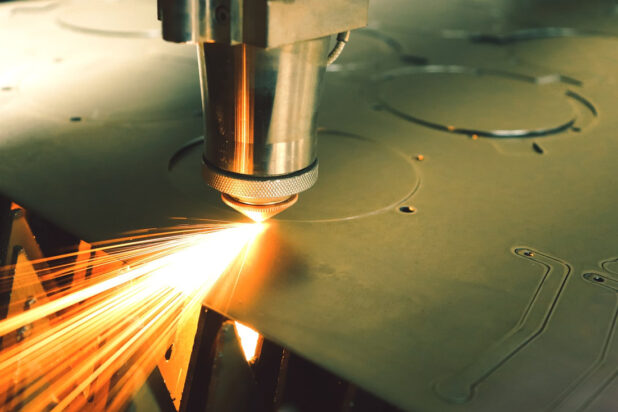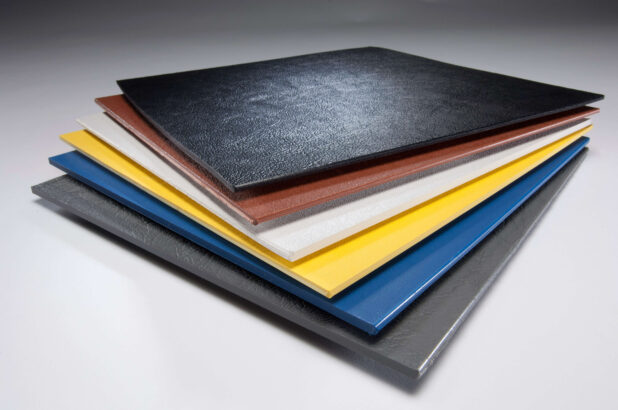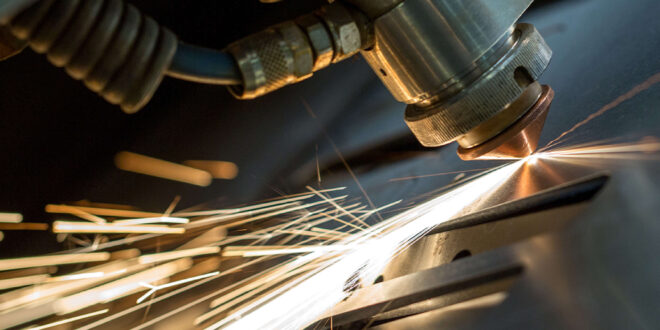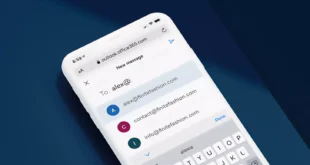In the process of cutting different materials, laser cutting slowly but safely takes over the leading place. Its popularity is growing thanks to its advantages such as precision, speed in versatility. It is most often used for industrial applications, although its use is very diverse. It is very often used in small enterprises, schools, and hobbyists.
This technology uses a laser to cut the material. It sounds simple, though not quite. It is a thermal separation process. The output power of the laser is directly controlled and most often by a computer, depending on the laser. The laser beam hits the surface of the material being cut. It heats up and melts or even evaporates so strongly. The actual cutting process occurs when the laser beam penetrates the material completely. He cuts precisely according to the given geometry.
There are many reasons why it is very good to use this type of cutting. Laser cutting is suitable for a large number of different materials. No other technology can cut so many different materials, either organic or inorganic. As the laser is incredibly precise, no additional material processing is required. Not only that, but in some cases, it also seals the edges of the textile so that it does not spill further. Carpenters adore it because it saves them money and time. Another advantage of this cutting is that there is no fear that the cutter’s head will protrude or the machine will wear out. This greatly reduces labor costs.
If you have a laser cutting machine, we are sure that you are already delighted with its advantages. Everything you imagine you have on the material. However, we must be careful when it comes to the choice of materials. Some materials behave perfectly when laser cut, while others are not so compatible. In the following text, we offer you a list of materials that are safe for laser cutting, but also a list of those that are not so safe under the laser beam.
Table of Contents
Materials safe for laser cutting

Most materials are completely safe for laser cutting. However, some materials can fill certain gases during heating, and they are not so safe for the worker. If you have a razor, we offer you a list of materials that you can experiment with without any problems.
1. Wood
One of the materials most commonly used for laser cutting, and at the same time the safest, is wood. If you are a beginner, wood and plywood are ideal for practice and shaping. Very often, wood is used to make pieces that are assembled, to engrave works of art in wood, to make souvenirs and miniatures. The laser, which can be shown here in its full power, is very grateful. Medium Density Fiberboard (MDF) is of medium quality and quite cheap and is great for those who are just learning to use a laser cutter. The thinner the wood, the easier it is to process. There is a large selection of options and ideas for laser fiber cutting, and this website can help you find an idea.
For one environmentally aware, we suggest bamboo as the perfect ecological option.
2. Acrylic and plastic
Plastic and acrylic are favorites among art souls. Believe it or not, you have even more choices here than with wood. These materials are ideal for creating jewelry, ornaments, and details. You can choose between acrylics of various thicknesses and hardnesses and cut very easily and precisely.
3. Cardboard and cork
Two materials that you will surely use very often.
Cardboard is one of the cheapest materials for laser cutting and is very easy to shape. Depending on whether you are cutting business cards or want to make a permanent model, you also choose the type of card. Corrugated, gray, and cellulose are most commonly used.
Cork is ideal for making children’s toys, mats, or pendants. Although it is easy to work with, cork is not suitable for miniatures and small parts.
4. Textiles and leather
Laser cutting of fabric has only recently become popular and is done on the principle of laser embroidery. You can make the most beautiful embroideries on cotton, nylon, polyester, and other fabrics.
Leather also belongs to textiles but is still a slightly more expensive option. If you’ve been training on plain fabrics, try this one too. Wallets, bags, and belts are just some of the ideas you can make from leather.
Materials that should not be laser cut
As much as you have a powerful laser cutter, you should still avoid certain materials. We offer a list of such:
1. PVC
Polyvinyl chloride, or PVC, is versatile plastic material for a variety of uses. Various types of pipes, cables, synthetic leather, all made of PVC material. It is not safe for laser cutting. These materials release chlorine gas when heated, which can not only damage the laser but can also seriously injure you.
2. Carbon fiber
These materials should not be cut by lasers because they absorb the high laser energy and also possess high diffuse energy. They can ignite and spread fire very easily.
3. ABS plastic

Another material that is not suitable for laser cutting is because it melts and leaves behind a mess that is very difficult to clean. This is not the only problem. Melting releases hydrogen cyanide, which is extremely toxic.
4. Materials with glue
Laminate, wood, and acrylic are great for cutting, but if there is already glue on them, then be careful. The glue and various substrates burn during cutting and make a mass that can blur, heat up, and damage the lens. Even trying to remove this mass can damage the cutter.
We have highlighted the materials that are most often subjected to laser cutting. Of course, there are many other materials such as aluminum, marble, glass … Most materials are completely safe, however, we suggest that you test them before cutting. If you are not sure about the composition of a material, it would be good to inquire in detail. Even if a material is cut nicely, it can emit gases that are not healthy at all when heated. Therefore, and especially if you are a beginner, it is best to be well informed.
 World Magazine 2024
World Magazine 2024






